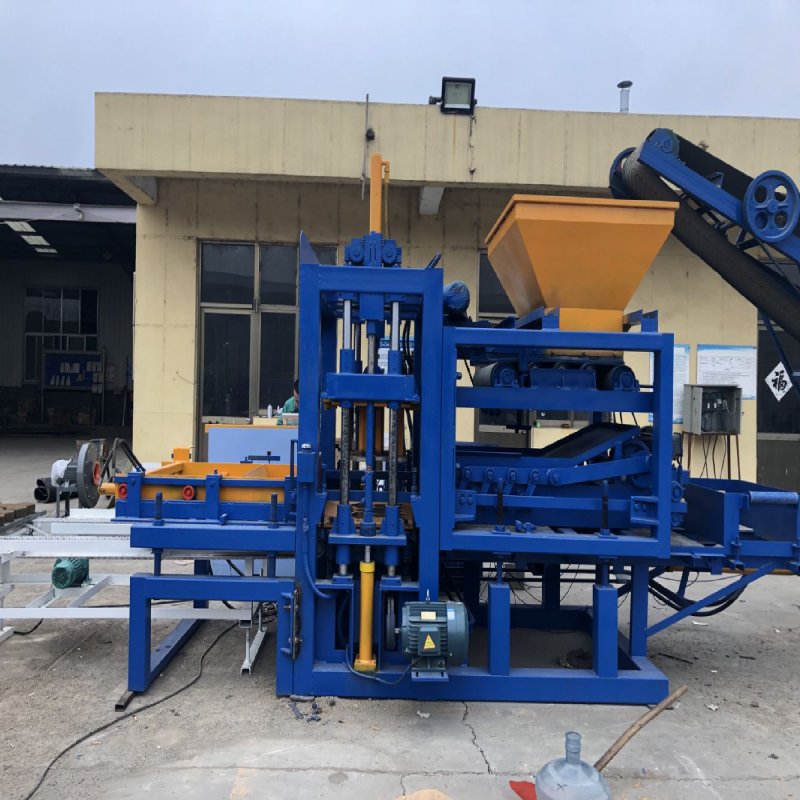
The construction industry, a cornerstone of human progress, is continually evolving with advancements in technology.
One significant revolution in this sector is the rise of automated brick manufacturing.
Automation has penetrated various industries, and brick production is no exception.
Automated brick manufacturing processes offer numerous benefits, from increased productivity and efficiency to improved quality and cost savings.
This essay explores the growing influence of automation in the brick manufacturing industry and its potential to shape the future of construction.
From robotic assembly lines to AI-driven quality control, automated brick manufacturing promises to redefine traditional practices and pave the way for more sustainable and innovative building solutions.
The Mechanization of Brick Making: An Overview
The mechanization of brick making has a rich history, starting with simple hand-operated machines and gradually progressing to the advanced automated systems of today.
The transition from traditional manual brick making to mechanized processes began during the Industrial Revolution.
Early brick-making machines introduced manual labor-saving devices, such as hand-powered wooden molds and manual brick presses.
The 19th and early 20th centuries witnessed the development of pneumatic and hydraulic brick-making machines, which improved productivity and reduced labor requirements.
These machines operated on compressed air or hydraulic power to mold and press bricks.
With the advent of electricity and more sophisticated technology, semi-automated brick-making machines emerged.
These machines still required some manual intervention but significantly reduced the need for physical labor.
Fully Automated Brick Manufacturing: Advancements and Benefits
The past few decades have witnessed a significant leap in brick manufacturing automation, leading to fully automated production lines.
This shift has brought about numerous advantages for the construction industry.
Automated brick manufacturing systems can produce a large volume of bricks with remarkable speed and efficiency.
The continuous operation of automated lines minimizes downtime, resulting in higher production rates and faster project completion.
Automation ensures a higher level of precision and consistency in brick production, reducing variations in size, shape, and density.
Consistent quality not only improves the overall aesthetics of the building but also enhances structural integrity.
While initial investment in automated systems may be higher, the long-term cost savings are significant.
Automated brick manufacturing reduces labor costs, minimizes material wastage, and optimizes energy consumption.
Automation eliminates many manual labor-intensive tasks, reducing the risk of worker injuries and musculoskeletal issues.
Workers can be allocated to more supervisory and skill-based roles, improving overall workplace safety and ergonomics.
Robotic Brick Production: Precision and Efficiency
Robotic technology has played a crucial role in the advancement of automated brick manufacturing.
Robots are being employed in various stages of brick production to optimize processes and enhance overall efficiency.
Robots equipped with suction cups or gripping mechanisms can efficiently stack and arrange freshly molded bricks on drying racks or pallets.
This automation minimizes handling errors and expedites the brick curing process.
In the case of special brick designs or customization, robots with precision cutting tools can create intricate shapes and patterns with accuracy, providing architects and builders with greater design freedom.
Once the bricks are cured and ready for transport, robots can package them and stack them on pallets automatically, streamlining the logistics process and preparing the bricks for delivery.
AI-driven Quality Control: Ensuring Excellence
Artificial Intelligence (AI) has become an integral part of automated brick manufacturing, particularly concerning quality control.
AI-driven systems can identify defects, monitor processes, and optimize production in real-time.
AI algorithms can analyze bricks during various stages of production, identifying defects such as cracks, irregularities, or dimensional deviations.
This early detection helps in minimizing wastage and ensures only high-quality bricks reach the market.
AI can continuously monitor the entire brick manufacturing process, adjusting parameters and optimizing settings to achieve the best results in terms of quality, efficiency, and energy consumption.
AI-driven systems can predict potential equipment failures and maintenance needs, allowing manufacturers to conduct proactive maintenance and avoid unexpected downtime.
Automated brick manufacturing has emerged as a transformative force in the construction industry, revolutionizing traditional brick-making processes and redefining the future of building.
From the mechanization of the past to the fully automated systems of today, advancements in robotics and AI-driven quality control have accelerated the pace of production while maintaining consistent quality and precision.
The rise of automated brick manufacturing offers numerous advantages, including enhanced productivity, cost savings, and improved workplace safety.
As automation continues to evolve, the construction industry can look forward to a future where innovative technology and sustainable practices converge to build structures more efficiently, sustainably, and beautifully than ever before.
